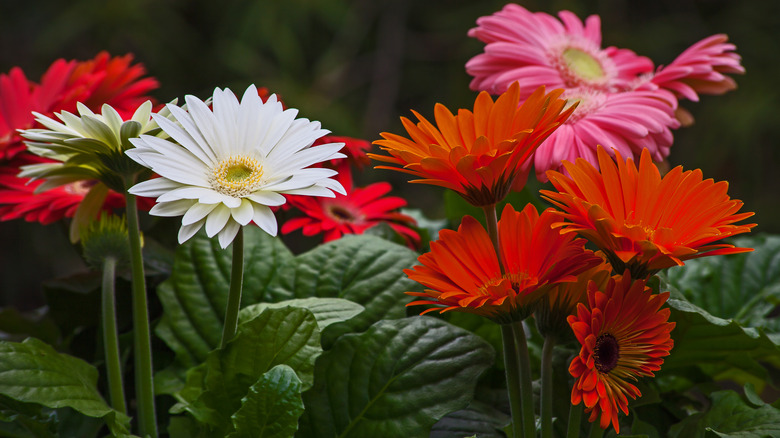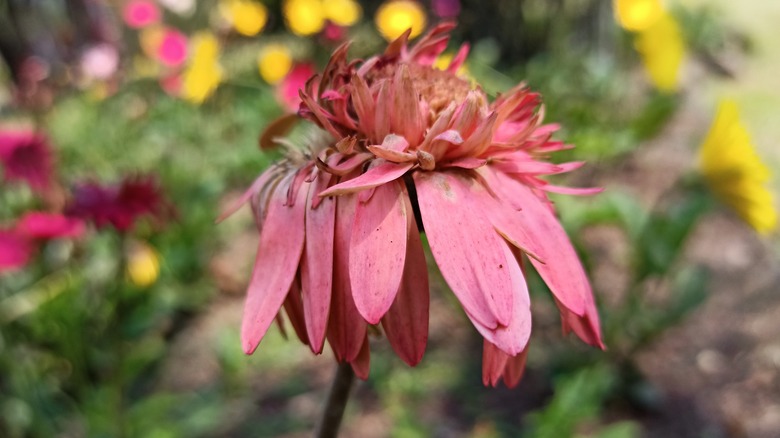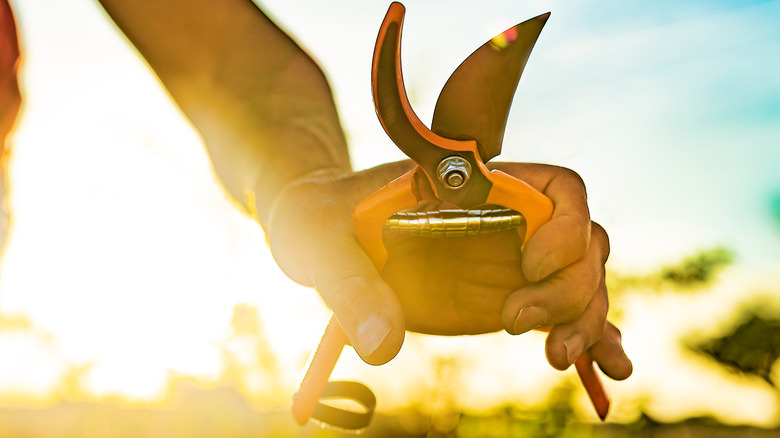Garden Tips For Fresh Gerbera Daisy Blooms All Summer Long
What's not to like about gerbera daisies? Their sunny faces beg to be looked at. Gerberas are relatively easy to grow, and have long-lasting flowers that can make your garden pop from late spring to early fall, or even year-round in warmer climes that don't get frosts. Daisies look perfect in your flower garden, especially these vibrant species that complement other plants beautifully.
These natives of southern Africa, tropical Asia, and South America, are stately, showy additions to your flower garden. These mainly annual species top out at about 1.5 feet, with the color-saturated flower's leafless stem stretching 6 inches above its leaf cluster. With some strategic trimming, you can encourage your bright buddies to show off for the entire growing season, either outdoors or in a pot on your window sill.
With a careful combo of deadheading and removing leaves, your gerberas will divert extra energy toward pushing out new blossoms. While they may need a bit of a break to fuel up for another performance, some smart pruning will be the coaching these plants need to keep your flower bed in full color for months.
Deadheading is important to keep your gerberas healthy
Like many perennials and annuals, deadheading is a surefire way to inspire your gerbera daisy to put out more blossoms. When flowers begin to wilt on their stems, getting rid of the dead weight helps your plant conserve energy it's pumping into the dying blossom. Instead, a trim of the wilting stem diverts the nutrients into new growth. Carefully removing flowers and their stems near the center of the plant, close to where the buds form, is essential. Despite the fact that trimming too low can be one of the mistakes to avoid when deadheading your garden's flowers, this is not the case for gerbera daisies. Usually it's best to deadhead flowers by cutting them along the stem, right above their first leaf. Since gerbera daisies don't have leaves along their stems, it makes this general guideline unnecessary.
Gerberas need sunlight to hit the center of the plant in order to produce more flowers. These daisies' leaves grow densely, often competing with the flowers for sunlight. Trimming some of the central leaves allows the sun to reach buds that otherwise would struggle to get enough sun. Taking out extra leaves from the center of the plant throughout the season is the best method to encourage more flowers to grow.
If you don't see new buds for a few weeks, don't worry. It's normal for gerberas to rest for several weeks between blooms so they can build up enough strength for their next display.
Tips for pruning gerbera daisies
Impatient gardeners – that probably includes most of us – will be tempted to pinch off wilted stems and damaged leaves with our fingers. Yet, for healthy gerbera pruning, a clean cut is safer. Beginners or even seasoned home gardeners can always benefit from tips to prune houseplants like a pro.
According to experts at the Garten Factory in Fond du Lac, Wisconsin, you should water your plant before pruning. Next, they advise us to prune our gerbera with a sharp pair of bypass shears or floral scissors, because pulling or pinching the stems with your fingernails can shred the plant tissue. Bypass shears have blades that cut like scissors, providing a clean cut. Instead of simply cutting off the flower head, cut the entire stem down to the base of the leaves. Follow the same guidelines for pruning leaves. If your plant has torn leaves or ones damaged by the sun, trim them near their base, as well.



